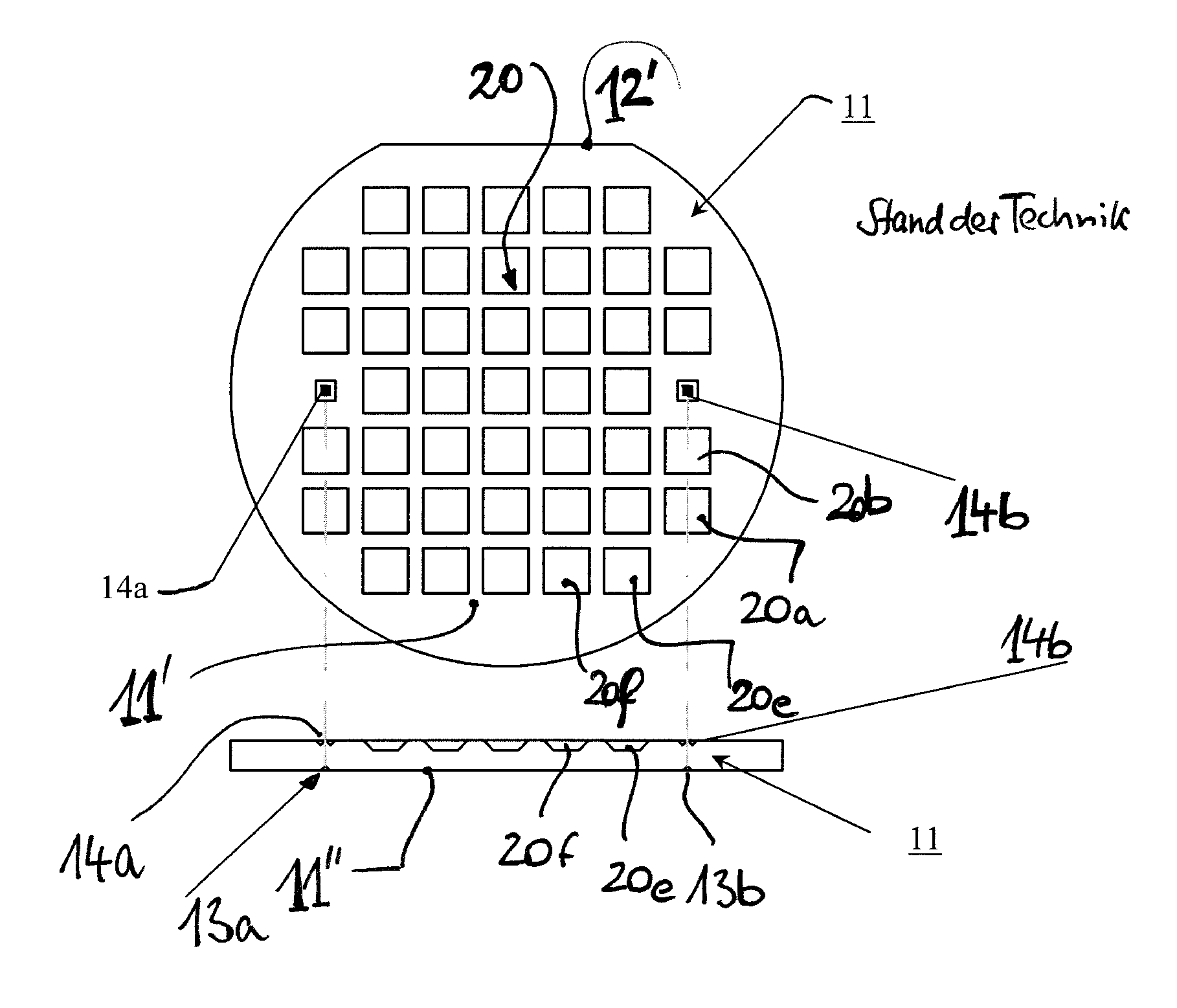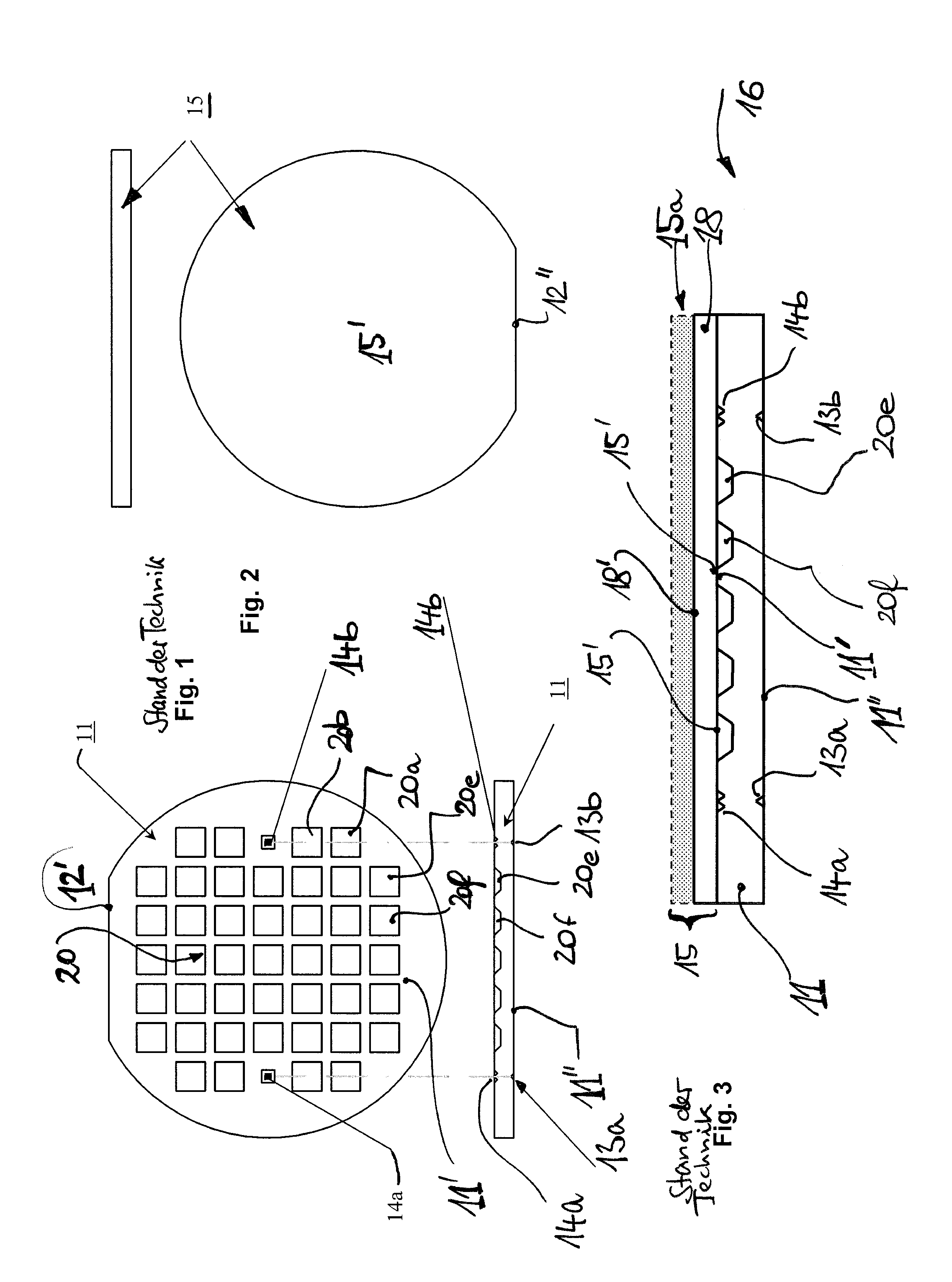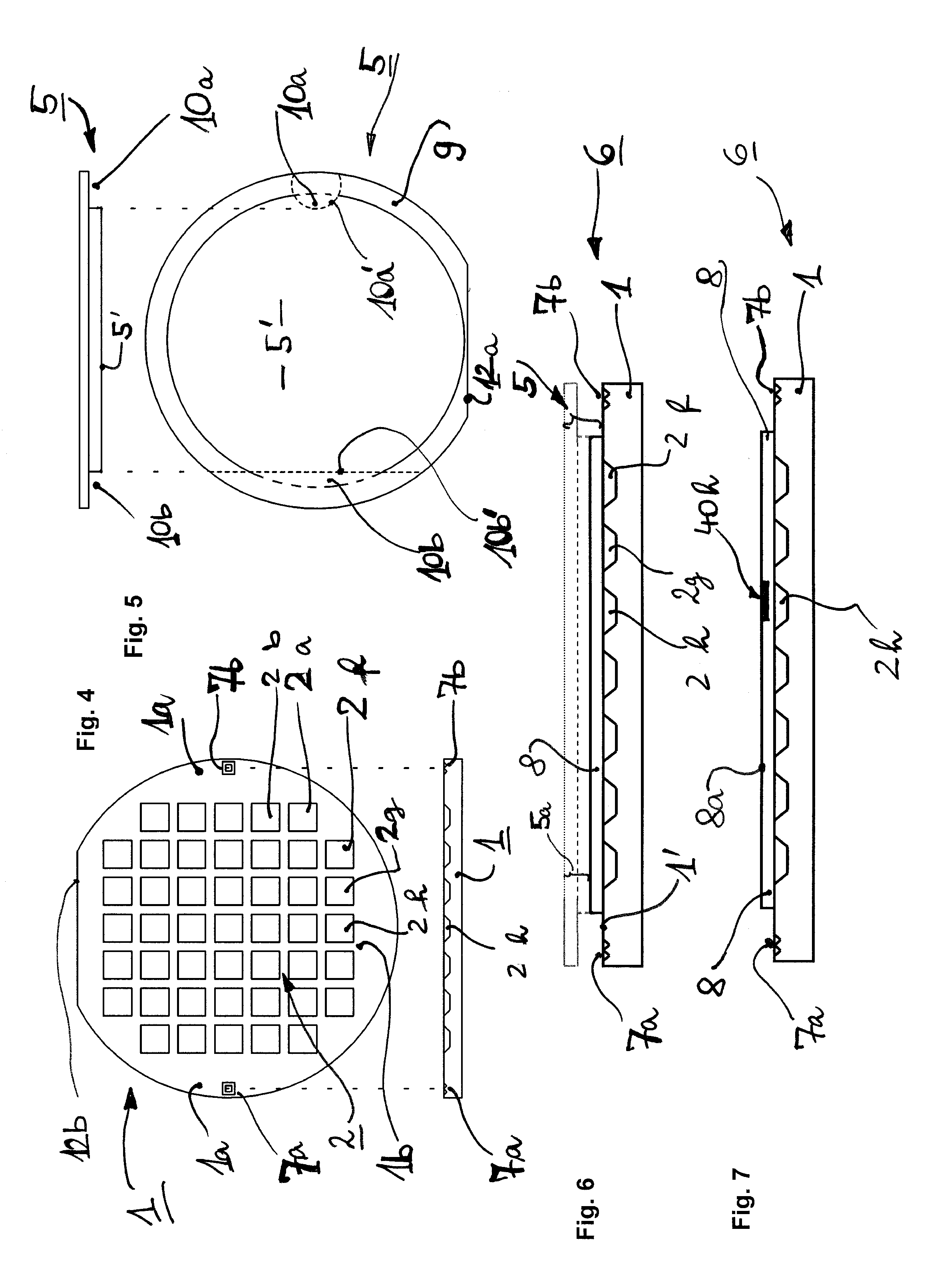Orientation of an electronic CMOS structure with respect to a buried structure in the case of a bonded and thinned-back stack of semiconductor wafers
a technology of electronic cmos and buried structures, which is applied in the direction of electrical appliances, basic electric elements, instruments, etc., can solve problems such as the recess or withdrawal of the perimeter or edg
- Summary
- Abstract
- Description
- Claims
- Application Information
AI Technical Summary
Benefits of technology
Problems solved by technology
Method used
Image
Examples
Embodiment Construction
[0041]FIGS. 1 to 3 illustrate the approach corresponding to the prior art. The situation on the bond surface 11′ of the cavity wafer 11 is illustrated in FIG. 1 as a top view. In this case, the structure 20 consisting of depressions 20a, 20b, 20e and others to be etched into the wafer surface are visible.
[0042]Alignment marks 14a, 14b are clearly spaced apart from the wafer edge and are positioned in the vicinity of the edge structure 20. The sectional view of FIG. 1 illustrates alignment marks 13a, 13b on the rear side 11′ of the cavity wafer 11, which correspond to the alignment marks 14a, 14b.
[0043]Reference signs 12′ and 12″ indicate a main flattening as a linear edge for both the wafer 11 and the wafer 15.
[0044]In FIG. 2 there is shown the non-processed cover wafer 15 used for covering the cavity wafer 11. The surface to be bonded is 15′. Wafers 11 and 15 are bonded. The bonded wafer stack 16 is formed. The stack is shown in FIG. 3 in sectional view—after thinning 15a of the c...
PUM
 Login to View More
Login to View More Abstract
Description
Claims
Application Information
 Login to View More
Login to View More - R&D
- Intellectual Property
- Life Sciences
- Materials
- Tech Scout
- Unparalleled Data Quality
- Higher Quality Content
- 60% Fewer Hallucinations
Browse by: Latest US Patents, China's latest patents, Technical Efficacy Thesaurus, Application Domain, Technology Topic, Popular Technical Reports.
© 2025 PatSnap. All rights reserved.Legal|Privacy policy|Modern Slavery Act Transparency Statement|Sitemap|About US| Contact US: help@patsnap.com



